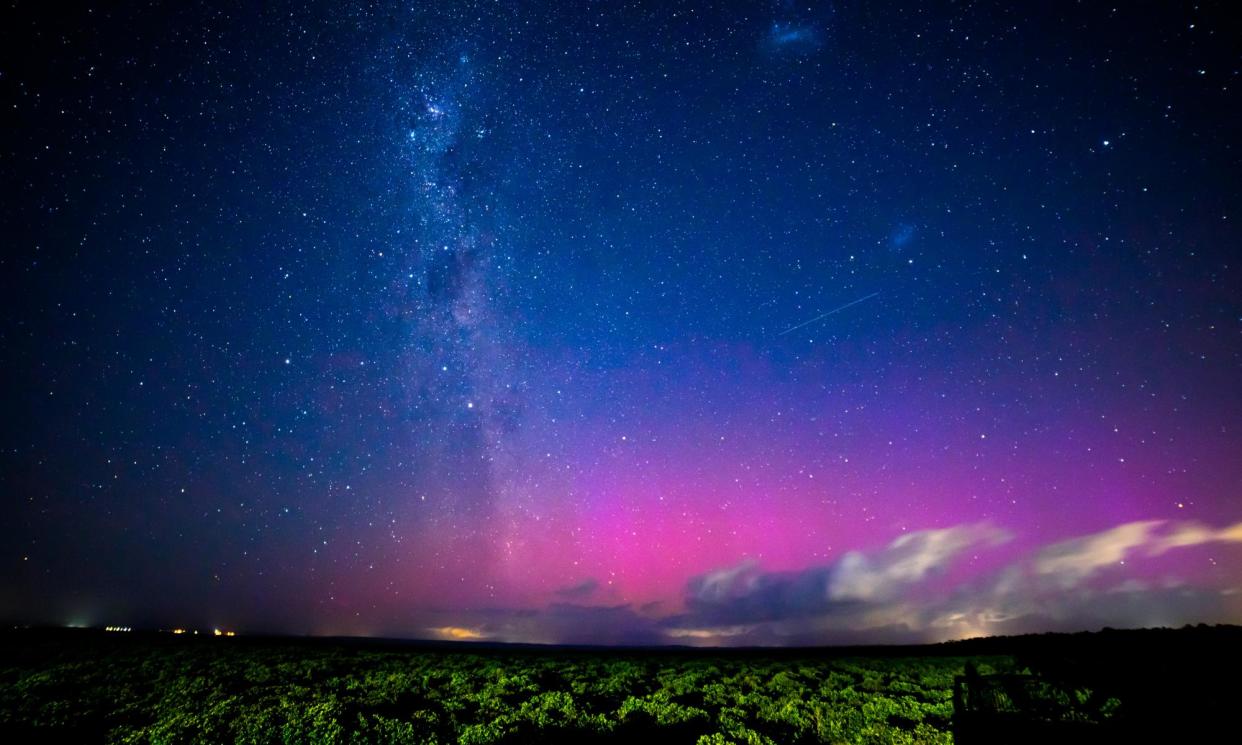Spectacular aurora australis expected after severe geomagnetic storm eruption on sun’s surface

The spectacular aurora australis could be visible from Victoria to Western Australia this week after a severe geomagnetic storm erupted on the sun’s surface.
The shimmering spectacle comes on the same night as a penumbral lunar eclipse, which will be visible across the nation.
The Bureau of Meteorology’s space weather forecasting centre issued an aurora alert on Monday morning, which said that the storm was in progress and the southern lights could be visible.
The storms are caused by coronal mass ejections, when clouds of plasma erupt from the sun’s outer atmosphere. Particles stream towards Earth, creating the spectacular display as they strike the Earth’s magnetic field.
The storm peaked at 6 on the Kaus Index (on a scale of one to eight measuring geomagnetic activity), which means auroras will potentially be visible across Tasmania, along Victoria’s coastline and even on Western Australia’s south-west coast.
They are more commonly seen from Antartica but the more severe the storm, the further north they appear.
Related: ‘Larger than Everest’ comet could become visible to naked eye this month
Severe storms can disrupt power networks and the satellites that provide navigation, surveillance and communication services. They can also pose a radiation risk to astronauts and people in high-flying aircraft.
The BoM advises people hoping to see the aurora australis to find somewhere dark, like a beach or a hill with an unobstructed view south. The best viewing time is between 10pm and 2am.
Last year, there were reports of shimmering night skies from Busselton in WA, to Ballarat and Canberra.
Macquarie University astronomer Dr Stuart Ryder said the 11-year solar cycle was likely nearing its peak.
“It goes from a relatively benign, calm state with very few sunspots on the surface to a very active phase about five or six years later, with a maximum number of sun spots,” he said.
“It’s much more likely to release huge flares of energy, enormous quantities of charged particles radiating away from the sun … their characteristic colours are green or red but people report blues, yellows, even purples.
“The more powerful the flare and the more it puts out, the greater the chance that people who live more towards the equator might get to see them.”
Tonight and tomorrow night will be the best time, he said.
Meanwhile, at about 7pm tonight in Sydney and 7.30pm in Melbourne, the Earth’s shadow, or penumbra, will dim the moon.
It will be visible in spots including North and South America, as well as parts of Asia and Africa. In Australia, the details for people hoping to catch it are published on timeanddate.com.
Related: State-of-the-art telescope in Chile to offer best view yet of universe
Ryder said the eclipse will be half over by the time the moon clears the horizon. “Even when it does, the moon won’t pass through the deepest part of the Earth’s shadow,” he said. “It will be a full moon, and the upper part could appear a bit darker, because it’s deeper into the Earth’s shadow.
“Then the moon will move out of the shadow that it’s in and will be restored to full brightness … which unfortunately could ruin people’s chances of seeing the aurora.”


